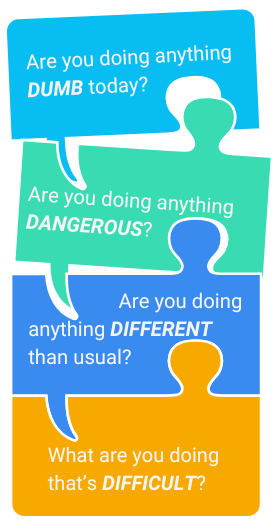By Mark Spring, CSP, AGC Safety Management Consultant

Once the personal check-in is complete, it’s a great time to shift the conversation back to work and dig deeper into what the employees are doing and how they’re doing it. A simple but powerful tool to guide this discussion is the 4 Ds: dumb, dangerous, different, and difficult.
Ask your employees:
1. Are you doing anything dumb today?
Are you spending time on something that could be done more efficiently or safely? Are shortcuts being taken that could increase risk? This question opens the door to discussing better and safer methods. Employees usually know when something is off or inefficient—they just need a chance to talk about it.
2. Are you doing anything dangerous?
Certain tasks, such as working at heights, operating heavy equipment, or handling hazardous chemicals, inherently carry risks. Asking this helps identify those tasks early so supervisors can take steps to mitigate the risks, such as implementing additional controls or reassessing the situation before something goes wrong.
3. Are you doing anything different than usual?
Changes in routine, the introduction of new tools, materials, processes, or team members can also introduce new hazards. This question encourages awareness and prompts a fresh look at whether a new risk assessment or additional communication is needed.
4. What are you doing that’s difficult?
Is the task physically demanding, technically complex, or mentally exhausting? Difficult work increases the risk of mistakes, fatigue, and injury. Identifying these tasks allows you to offer support, provide additional tools, adjust the work, or find a safer way to complete the task.
Why It Works
The 4 Ds are quick, non-confrontational, and easy to remember. They foster honest, two-way conversations and show employees that you’re genuinely invested, not just going through the motions. This approach encourages workers to engage in self-reflection and empowers them to voice their concerns.
Next time you’re on a jobsite, start with a personal check-in, and then ask about the 4 Ds. You might uncover something that prevents an injury, improves morale, and helps build a stronger, safer team.